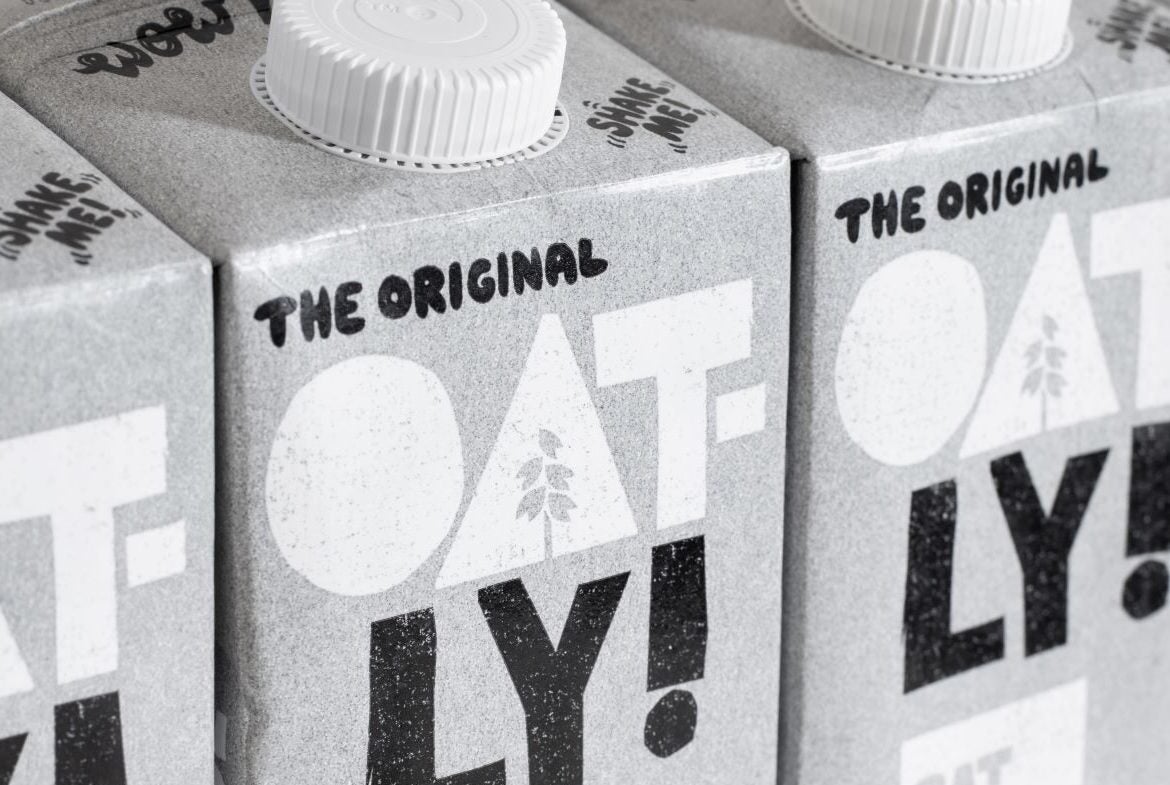
Loss-making Oatly has booked a hefty impairment charge related to last year’s decision not to proceed with the construction of three manufacturing plants.
The branded oat-drinks maker for retail and foodservice set out a plan early last year under previous CEO Toni Peterson to reach profitability in fiscal 2024 under an “asset light strategy”.
New chief Jean-Christophe Flatin, who moved from president of the Sweden-headquartered business in June, said in the results commentary today (15 February) for the 2023 financial year that Oatly’s focus for the new season is on its “top priority of driving toward profitable growth”.
However, the decision to abandon plans for additional sites in Peterborough, in the UK, another in the US city of Fort Worth and a third in China, has come at a cost.
In the fourth quarter to 31 December, Nasdaq-listed Oatly booked a non-cash impairment charge of $172.6m and “other costs” of $29m, “related to discontinued construction of certain production facilities”.
Those charges were booked within operating and income expenses, which rose to $204.3m from $41.1m in the prior year.

US Tariffs are shifting - will you react or anticipate?
Don’t let policy changes catch you off guard. Stay proactive with real-time data and expert analysis.
By GlobalData“The company may incur additional costs not currently contemplated due to events associated with the discontinuation of construction at these facilities,” according to Oatly’s results commentary.
Revenue for the quarter rose 4.6% on a reported basis to $204.1m, with volumes up 2% and price/mix a positive 0.5%.
Oatly’s gross margin climbed 750 basis points to 23.4% but the company booked losses in other parts of the P&L.
EBITDA losses widened for the quarter to $228m, from $111.2m a year earlier, although the adjusted EBITDA loss shrank to $19.2m from $60.4m.
Losses before tax also widened, to $293.1m from a $121.9m loss.
“It was a pivotal year where we executed a significant re-calibration of the entire organisation to stabilise our business and ensure we are properly positioned for long-term success,” Flatin said.
“As we enter 2024, our financial guidance calls for solid top-line growth, while delivering significant profit improvement as we focus on our top priority of driving toward profitable growth.”
It was a similar picture for the full year 2023 results. Reported revenue rose 8.5% to $783.4m, with volumes up 3.1% and price/mix 5.6%.
The EBITDA loss widened to $405.2m versus the $347.4m in fiscal 2022, and in adjusted terms losses narrowed to $157.5m from $267.9m.
Losses before tax remained in the red at $408.2m, compared to a $397.3m loss.
Oatly’s shares were down almost 15% at $1.15 on the Nasdaq exchange as of 3:53pm UK BST today.
Not a lot of topside was painted into the sales growth outlook for fiscal 2024, with Oatly pointing to sales revenue growth of 5% to 10%.
Adjusted EBITDA guidance was more positive, albeit still in negative territory, with the company outlining losses in the range of $35 to $60m.
In terms of free cash flow, Oatly said it booked a $234.7m “outflow” for the year to 31 December, compared to an “outflow” of $475.1m in the previous 12 months.
“The improvement in free cash flow was driven both by decreased net cash flows used in operating activities and lower capital expenditures,” it said.



